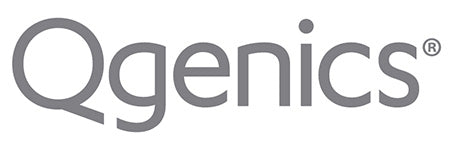What is oxidative stress?
The imbalance between the formation and accumulation of reactive oxygen species (ROS) in cells and tissues and the biological system’s ability to detoxify these reactive products lead to oxidative stress[1]. Reactive oxygen species are produced in the body by oxygen metabolism and environmental factors like air pollution. ROS significantly increase the risk of oxidative stress[2]. When there are more ROS present than can be kept in balance by antioxidants, the ROS can start doing damage to fatty tissue, DNA, and proteins in the body. Proteins, lipids, and DNA make up a large part of the body, so that damage can lead to a vast number of diseases over time, including neurodegenerative diseases and inflammatory diseases. The inflammatory diseases include skin problems.
What is inflammation?
Inflammation is a natural protective mechanism against microbial and viral infections, allergen exposure, radiation and toxic chemicals, autoimmune and chronic diseases, obesity, alcohol and tobacco use, and a high-calorie diet. Oxidative stress and a range of protein oxidations are common symptoms of chronic illnesses connected to increased ROS generation [3]. In addition, protein oxidation results in the production of inflammatory agents in the body that cause inflammation.
The link between oxidative stress and inflammation
Oxidative stress and inflammation are closely related. In many pathological conditions, both processes are present simultaneously. Numerous chronic diseases are associated with an increase in the body’s inflammatory response when exposed to oxidative stress[4]. During the inflammatory process, particular cells produce large amounts of ROS to kill the invading agents. Thus, they can induce localized oxidative stress and tissue injury.
Oxidative stress and inflammation are underlying factors in skin problems
Some chronic inflammatory skin conditions include acne, dermatitis, drug rashes, psoriasis and eczema. Psoriasis and eczema are a significant issue today. They can run in a family, but they are most often triggered by allergens, extreme temperatures, and most often stress.
What are polyphenols?
Polyphenols are antioxidants which can neutralize harmful free radicals that would otherwise damage cells and increase your risk of chronic conditions, such as psoriasis, eczema, diabetes and heart disease. Polyphenols help many chronic conditions by reducing inflammation[5].
How do polyphenols reduce oxidative stress and inflammation?
Polyphenols have antioxidant activity that prevents damage of body cells from reactive oxygen species. Polyphenols exert their antioxidant ability by various mechanisms, including 1) stopping the enzymes that produce reactive oxygen species, 2) reducing the action of reactive oxygen species, and 3) improving body antioxidant defense mechanisms [6].
Furthermore, polyphenols have antiproliferative properties that mean they can prevent the spread of inflammation in the body.
Sources of polyphenols
Some sources of polyphenols are as follows:
Olives: polyphenols from olives are one of the most potent antioxidants and can actively reduce oxidative stress and inflammation.
Berries.
Herbs and Spices.
Cocoa Powder.
Nuts.
Flaxseeds.
Vegetables.
Incorporate these foods into your diet to give your body the benefits of polyphenols.
References:
1. Pizzino G, Irrera N, Cucinotta M, et al. Oxidative Stress: Harms and Benefits for Human Health. Oxid Med Cell Longev. 2017;2017:8416763. doi:10.1155/2017/8416763
2. Hussain T, Tan B, Yin Y, Blachier F, Tossou MC, Rahu N. Oxidative Stress and Inflammation: What Polyphenols Can Do for Us?. Oxid Med Cell Longev. 2016;2016:7432797. doi:10.1155/2016/7432797
3.Salzano S, Checconi P, Hanschmann EM, Lillig CH, Bowler LD, Chan P, Vaudry D, Mengozzi M, Coppo L, Sacre S, Atkuri KR, Sahaf B, Herzenberg LA, Herzenberg LA, Mullen L, Ghezzi P. Linkage of inflammation and oxidative stress via release of glutathionylated peroxiredoxin-2, which acts as a danger signal. Proc Natl Acad Sci U S A. 2014 Aug 19;111(33):12157-62. doi: 10.1073/pnas.1401712111. Epub 2014 Aug 5. PMID: 25097261; PMCID: PMC4143057.
4. Popa-Wagner A, Mitran S, Sivanesan S, Chang E, Buga AM. ROS and brain diseases: the good, the bad, and the ugly. Oxid Med Cell Longev. 2013;2013:963520. doi: 10.1155/2013/963520. Epub 2013 Dec 5. PMID: 24381719; PMCID: PMC3871919.
5. Cory H, Passarelli S, Szeto J, Tamez M, Mattei J. The Role of Polyphenols in Human Health and Food Systems: A Mini-Review. Front Nutr. 2018;5:87. Published 2018 Sep 21. doi:10.3389/fnut.2018.00087
6. Perron, N.R., Brumaghim, J.L. A Review of the Antioxidant Mechanisms of Polyphenol Compounds Related to Iron Binding. Cell Biochem Biophys 53, 75–100 (2009). https://doi.org/10.1007/s12013-009-9043-x

